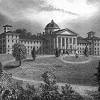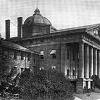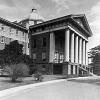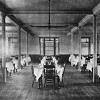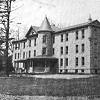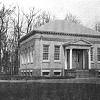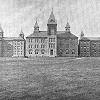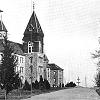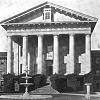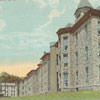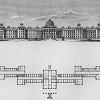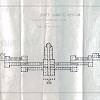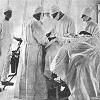Steam |
|
A PHP Error was encountered
Severity: Notice
Message: Only variables should be passed by reference
Filename: pages/site.php
Line Number: 13
Rathen State Hospital
Located at at an undisclosed place in United States of America 

- Genre:Criminal / Forensic Psychiatric Hospital, Kirkbride Plan, Psychiatric Hospital
- Comments: 609
- Built:1848
- Opened:1848
- Age:177 years
- Closed:1974
- Demo / Renovated:N/A
- Decaying for:51 years
- Last Known Status:Abandoned (Kirkbride wing tips and some outbuildings, the rest is being used)

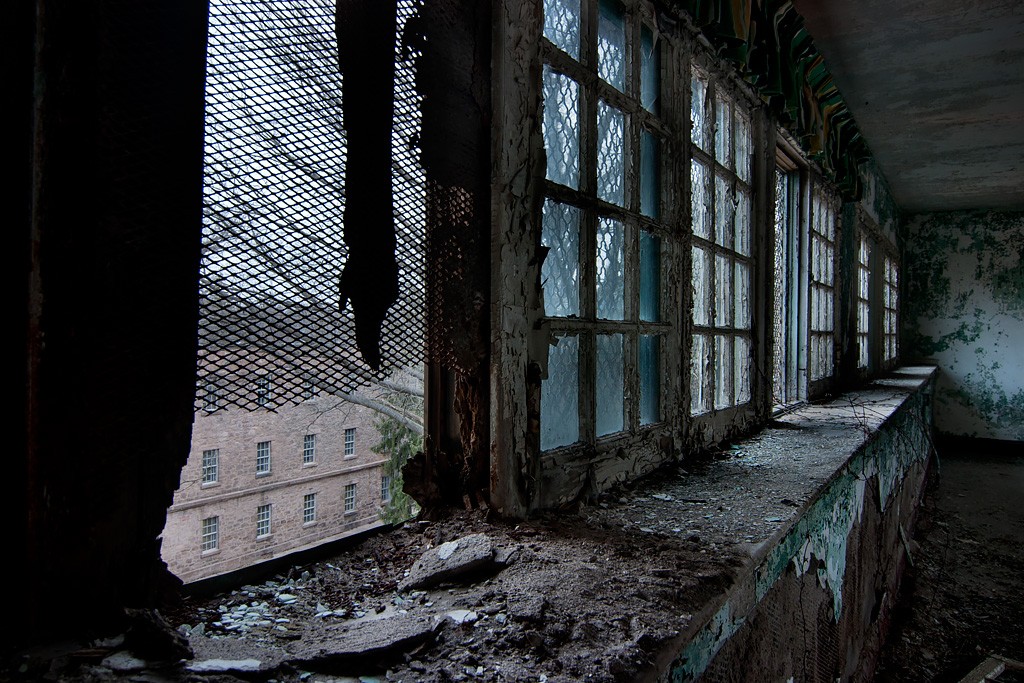
Photo © 2006 Tom Kirsch, opacity.us
Rathen State Hospital* History
Established in 1848, this psychiatric hospital was the first asylum constructed following the Kirkbride plan. This linear building plan, devised by Dr. Thomas Kirkbride, would become a popular form of asylum construction for another 50 years until they were criticized for their outdated design and high maintenance costs. The hospital was founded by Dorthea Dix, one of the most important pioneers in humane treatment of the mentally ill in the United States. She was known to have looked upon this hospital as her "firstborn child" - the funding and construction of an institution based on the Kirkbride plan represented a huge step forward in compassionate psychiatric care. Her appeals to state legislatures about the horrendous conditions for the mentally ill inside jails and almshouses were the driving force behind the decision to construct the asylum. Dix eventually spent the last years of her life in a private room here, until she died in 1887.
The Kirkbride building was constructed in Tuscan style, with rough local stone making up much of the exterior facade. The central administration area was quite impressive, resembling a temple with Doric columns adorning a large portico, replete with a domed cupola. This imposing edifice suggested the stability of the state institution. The central portion of the building was damaged in a fire in later years, and replaced with a structure designed in the architectural style of the time.
It was originally designed to house 250 patients; a small enough number for the hospital superintendent and his wife to visit every patient daily. The floor plan was elegantly simple - two wings flanked each side of a central administration area, and stepping back to create a shallow V. Disturbed patients were placed at the wing tips, and a patient could then have a goal to progress closer to the central area, toward the superintendent, the chapel, and metaphorically, God. Overcrowding soon led to the multiple additions of wings over the years, and attic space was converted to a third floor for dormitory space. The hospital was situated on a hill overlooking landscaped grounds, where patients could take strolls or work the land and get plenty of fresh air, an important part of mid-19th century psychiatric treatment. In 1893, the word "asylum" was dropped from the hospital's official name.
In 1907, a new medical director had improved patient care at the hospital by abolishing the use of mechanical restraints and instituting daily staff meetings to discuss hospital affairs. He also began to encourage the theory of infection-based psychological disorders - that all human disease was caused by infection, including insanity (developmental disorders, insanity, alcoholism, and other kinds of illnesses were often considered to be "diseases" during these years). The rampant tooth decay at the hospital spurred the doctor to perform many dental procedures in hopes to cure the patient by removing the source of the illness. Tooth extractions soared in the 1920s to an average of about 10 per admission, giving the hospital the nickname "Mecca of exodontias." If the patient was not cured after one or more tooth extractions, the doctor sought sources of infection in the tonsils and sinuses, performing a tonsillectomy if needed. Other organs were targeted if still no results surfaced; colons, spleens, stomachs, gall bladders, cervices, ovaries and testicles were continuously suspected and surgically removed. An reported 85% cure rate astonished hospital superintendents and the entire medical field, but these numbers were not accurate by any means.
An investigation was launched in 1925 after some concerns were voiced about the doctor's work - over 2,186 surgical operations had been performed under his direction by one estimate. After finding wards full of patients without teeth (and as a result couldn't speak or eat well), along with chaotic record keeping, a public hearing was held. The doctor fell ill during the hearing, and after being excused and having several of his own teeth removed, he pronounced himself cured and opened his own private hospital until he died in 1933. The case never reopened, and death rate of his many unnecessary operations are estimated to be near 45%.
Along with other common treatments for mental illness, such as hydrotherapy, Metrazol, and occupational therapy, the hospital still focused on treating infection until prefrontal lobotomy and electroconvulsive therapy procedures took hold in the 1940s. Overcrowding, underfunding, and lack of public support became a major issue as time wore on, much like other state-funded psychiatric hospitals across the country. A peak population of 4,237 patients were hospitalized in 1954, a far cry from its actual capacity, and services were reduced to a basic custodial care. Tranquilizing drugs were the godsend that finally allowed more discharges than admissions; patient population was nearly cut in half in just 14 years.
The number of beds has since been reduced to around 370. The facility still functions to this day at a fraction of the peak population in the 1950s; as a result, some parts of the Kirkbride building were abandoned since the mid-1970s, and other buildings have been vacated in more recent years.
* Note: the name "Rathen State Hospital" is a pseudonym; the real name of this location is currently undisclosed.
